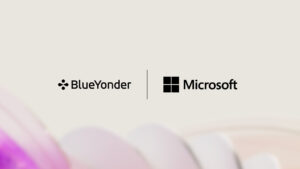
Harvesting cloud technology
OnWindows Issue 6: Spring 2016
Thanks to software-defined storage from Dell, German cereal manufacturer Nordgetreide has reduced its IT costs while lowering investment expense by three-quarters
 German breakfast cereal producer Nordgetreide specializes in processing corn, wheat, barley and rice. In an effort to enhance performance, the company wanted its IT to become more flexible and cost-efficient. To achieve this, it began investigating moving to a software-defined data centre (SDDC).
German breakfast cereal producer Nordgetreide specializes in processing corn, wheat, barley and rice. In an effort to enhance performance, the company wanted its IT to become more flexible and cost-efficient. To achieve this, it began investigating moving to a software-defined data centre (SDDC).
Joachim Klamroth, chief technology officer at Nordgetreide, says: “Our infrastructure was at the end of its lifecycle. We had to take action because our solutions, which include more than ten SAP systems and a large number of applications, must be highly available.” In addition, the manufacturing plants needed a better level of IT service.
The first step towards an SDDC was to move to a completely standardized Microsoft environment. At the heart of the environment would be Hyper-V hypervisor technology – part of Windows Server 2012 R2 – with Microsoft System Center 2012 R2 as the management software.
Nordgetreide then began looking for an IT vendor to provide the underlying hardware platform. Dell soon began to stand out during initial assessments. Klamroth says: “When we spoke to other vendors, we realized that only Dell really understood Scale-Out File Server and the ‘just a bunch of disks’ concepts, and was able to offer the necessary certified hardware, including implementation and technical service as a one-stop shop.”
Once testing was completed, Nordgetreide and IT partner SWITCOM began migrating applications from the existing VMware environment on HP and NetApp to a Dell end-to-end solution running Hyper-V and supporting a cloud environment. The migration took about six months.
Today, Nordgetreide ensures that it has the IT to help deliver its goals of maintaining product quality and improving processes. The company’s various business-critical applications are now based on a Microsoft private cloud using software-defined storage with the infrastructure underpinned by a Dell end-to-end solution. It deployed 10 Dell PowerEdge R720 servers with Intel Xeon processors, running Windows Server 2012 with Hyper-V to power the environment. Four of the Hyper-Vnodes support the production and test environments. Another four servers provide the basis for a Scale-Out File Server (SOFS) configuration, and are linked to Dell Storage with Microsoft Storage Spaces.
The communication between the Hyper-V nodes and the SOFS nodes is via the Microsoft Small Message Block (SMB) 3.0 Direct protocol. The storage comprises a Dell PowerVault MD1220 solution, featuring 24 1.2 terabyte (TB) 10,000 rpm Serial Attached SCSI (SAS) drives for the production system and 24 1TB 7,200 rpm near-line SAS drives for the test system.
Nordgetreide chose Dell Networking N4032F switches to deliver multiple 10GB links between the servers and storage. The energy-efficient and cost-effective switches ensure non-blocking, high performance. Running the Dell Networking, the switches bring SDDC capabilities to campus networks, supporting open standard protocols. For Nordgetreide, the Dell Networking N4032F switches met Microsoft’s requirements regarding the internal cluster communication. Furthermore, they supported remote direct memory access (RDMA) for higher throughputs and were Windows Server 2012 R2 certified.
Sebastian Bartko, an Infrastructure Architect at SWITCOM who led the project, says: “Through the multiple 10GB transfer connections with switched on RDMA and additional features, we were able to achieve high storage transfer speeds of over 1.2GB per second, while increasing mal-function compensation to nearly 100%. We’re able to expand in future by simply adding further SOFS clusters or hypervisors to the switch. As a result, we’re gaining high availability with huge bandwidth and greater flexibility for the future.”
Klamroth says: “We can create new virtual compute power or storage within seconds without worrying about resources. Our previous solution was already virtualized, but we always needed to consider storage capacity or performance, an issue we no longer face with our solution based on Microsoft and Dell.”
As part of the same infrastructure, Nordgetreide implemented two Dell R720XD servers, each with Intel Xeon processors, to give manufacturing plants access to the Microsoft cloud platform and to offer on-premises services. For securing data, a pair of Dell PowerEdge R720XD servers with Intel Xeon processors and tape libraries were also installed in the data center as backup servers.
“Many of our mission-critical services are running on the Dell end-to-end cloud platform,” says Klamroth. He adds: “We significantly reduced management complexity by adopting a Dell-based Microsoft cloud and moving to software-defined storage. Our infrastructure still consists of a large number of systems and applications, but only a small team is needed to administer the environment.”
Nordgetreide is more in control of its IT than ever before. It has significantly reduced the need for outsourced support because the infrastructure is largely software based and centrally managed. Klamroth says: “We paid service providers a lot to resolve IT issues at our remote offices. We have reduced this dependency by 80%, and our two IT personnel in the main data center can handle the vast majority of any issues themselves using Microsoft System Center 2012 R2.”
The company has also significantly lowered the amount of money it needs to invest in the hardware platform, and it is unlikely to face enormous investment costs again in the future for the infrastructure. Furthermore, the firm’s IT is more efficient. Says Klamroth: “Even though our IT investment is only a quarter of what it used to be, we benefit from much higher performance with our Dell and Microsoft cloud solution.”





